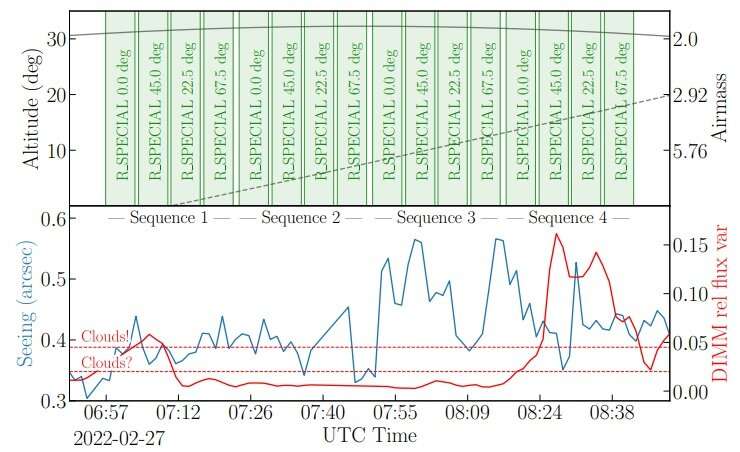January 10, 2023 report
This article has been reviewed according to Science X's editorial process and policies. Editors have highlighted the following attributes while ensuring the content's credibility:
fact-checked
preprint
trusted source
proofread
Researchers investigate tidal disruption event AT 2022cmc

Using the Very Large Telescope (VLT) of the European southern Observatory (ESO), an international team of astronomers has observed a tidal disruption event known as AT 2022cmc. Results of the observational campaign, presented in a paper published January 2 on the arXiv preprint server, could shed more light on the nature of this event.
Tidal disruption events (TDEs) are astronomical phenomena that occur when a star passes close enough to a supermassive black hole and is pulled apart by the black hole's tidal forces, causing the process of disruption. Such tidally disrupted stellar debris starts raining down on the black hole and radiation emerges from the innermost region of accreting debris, which is an indicator of the presence of a TDE.
Some TDEs exhibit strong and long-lasting X-ray emission with rapid variability accompanied by radio emission, attributed to synchrotron radiation. They are assumed to have relativistic jets, therefore they are also known as relativistic or "jetted" TDEs.
AT 2022cmc was discovered by the Zwicky Transient Facility (ZTF) as a fast and red transient at a redshift of 1.193. Subsequent observations of this source after its discovery found that a relativistic jet oriented towards the Earth was formed producing an afterglow powered by synchrotron radiation. Moreover, it turned out that the transient experienced an initial rapid (and red) decay phase in the optical/ultraviolet wavelengths, followed by a bluer luminous (−22 mag) plateau with a duration of about 4.5 days after detection in the rest frame. Therefore, AT 2022cmc was classified as an optically bright relativistic TDE.
In order to further investigate the nature of AT 2022cmc, a group of astronomers led by ESO's Aleksandar Cikota has performed optical linear and circular polarimetric observations of this TDE using the Focal Reducer/low dispersion Spectrograph 2 (FORS2) mounted on the VLT.
"Linear and circular polarimetry of AT 2022cmc was performed with VLT/FORS2 in the R-band during the plateau phase, on February 27, 2022 and March 10, 2022 (7.22 and 12.23 rest-frame days after the detection), respectively," the researchers wrote in the paper.
The observations detected no obvious linear nor circular polarization of AT 2022cmc. The astronomers explained that degree of linear polarization was found to be very low, at a level of 0.14—therefore lower than what has been observed in the case of the other two relativistic TDEs, namely: Swift J164449.3+573451 and Swift J2058+0516. When it comes to the circular polarization degree—it was measured to be approximately -0.3, hence also very low.
According to the authors of the paper, the non-detection of polarization confirms that AT 2022cmc is a relativistic TDE. They added that the observed emission during the monitored phases most likely originates from a thermal component from the TDE, that is axially symmetric and is viewed pole-on.
The scientists underlined that their research proves how important spectropolarimetric observations of the fast fading optical components of new jetted TDEs are in real time. Such studies could help us better understand the origin of TDE emissions.
More information: Aleksandar Cikota et al, Linear and circular polarimetry of the optically bright relativistic Tidal Disruption Event AT 2022cmc, arXiv (2023). DOI: 10.48550/arxiv.2301.00499
Journal information: arXiv
© 2023 Science X Network





















